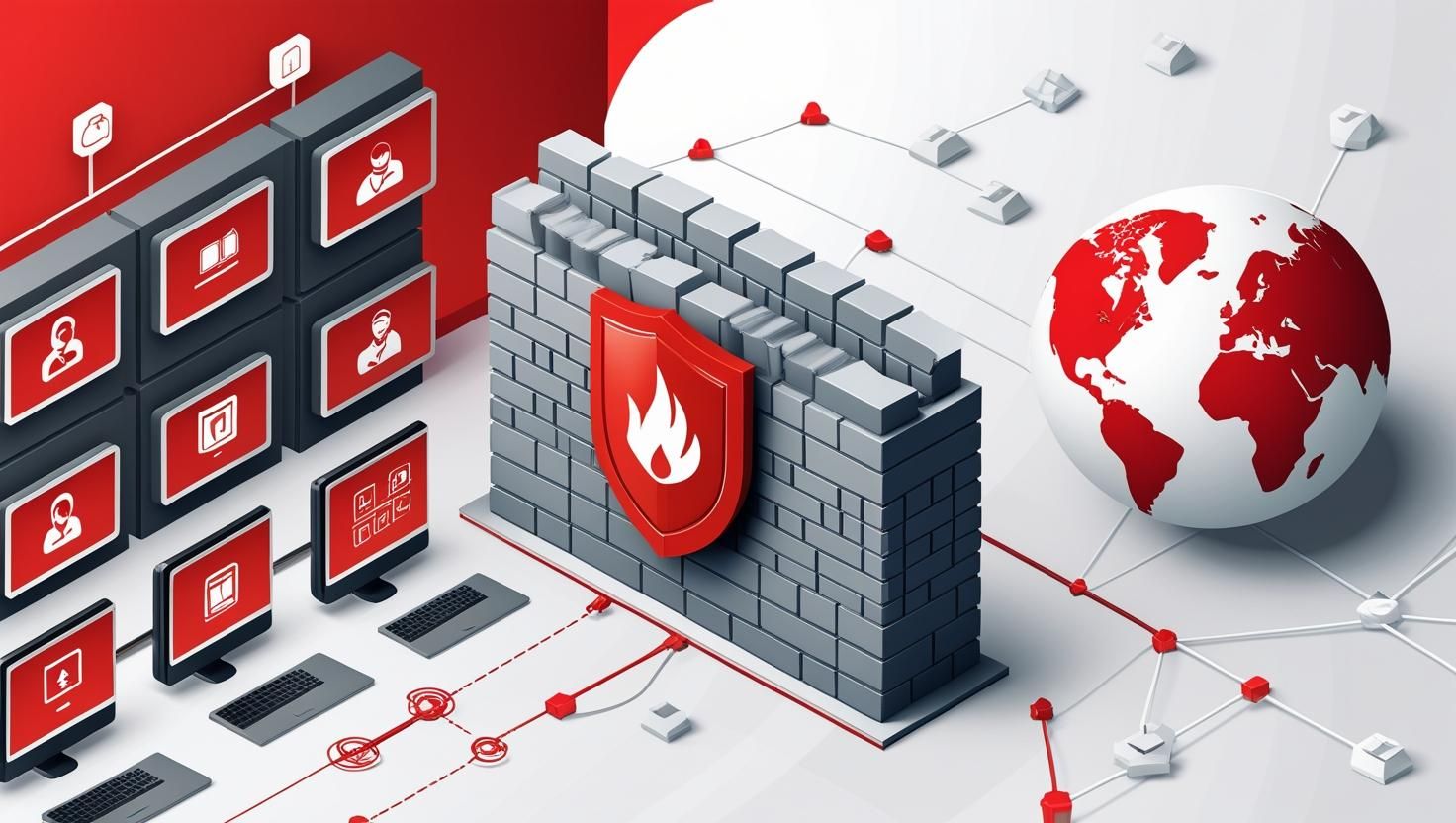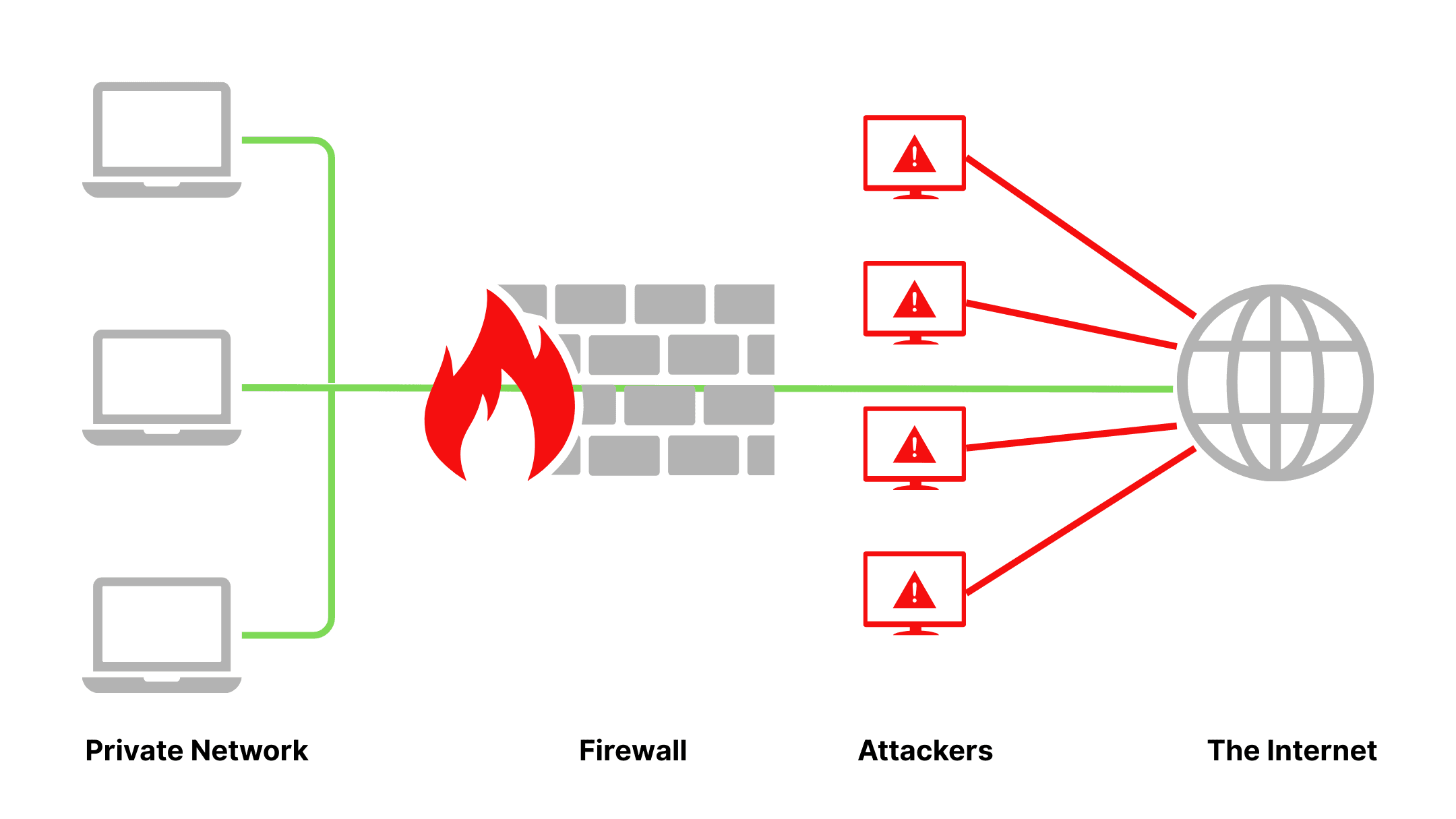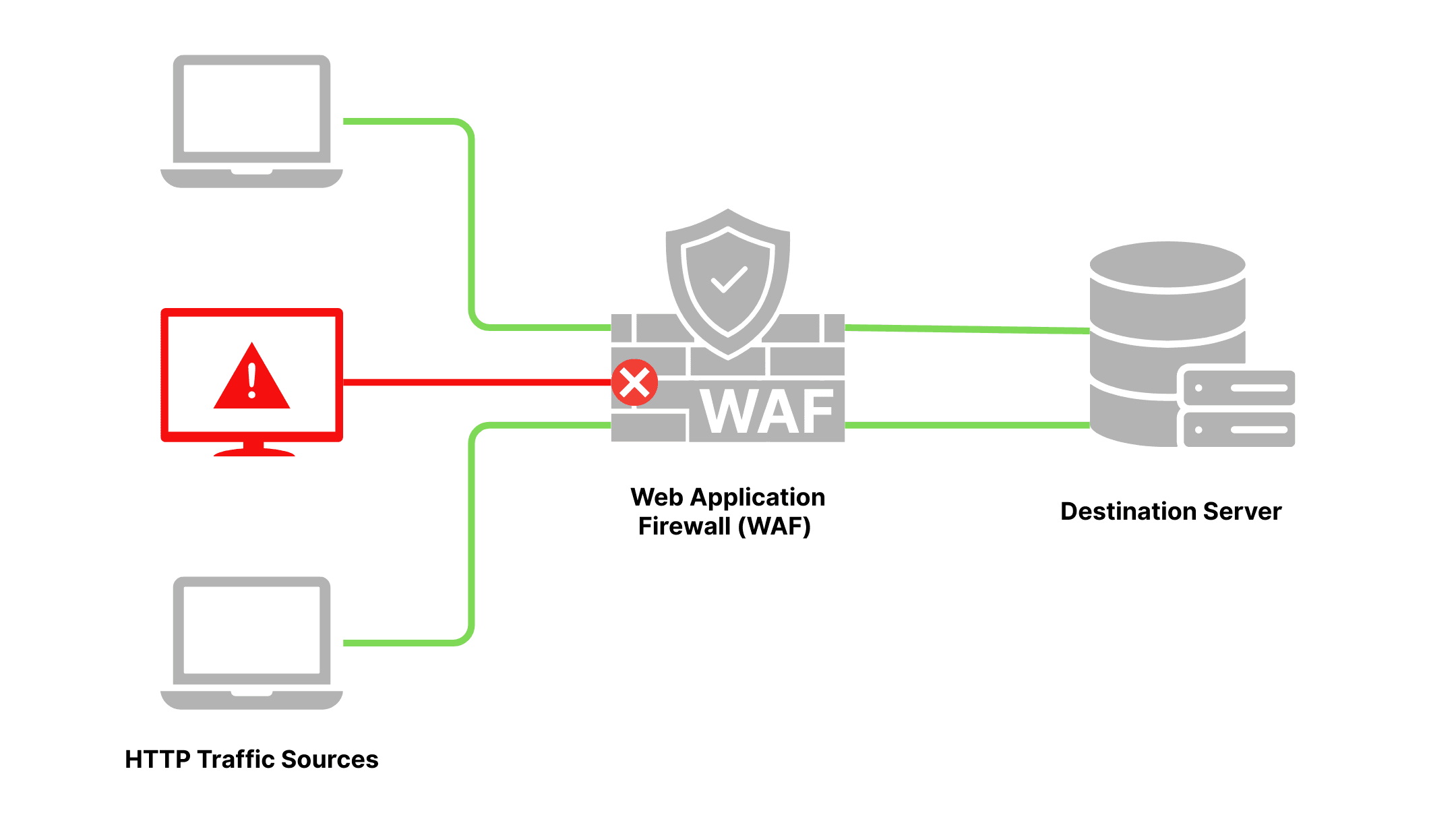What is a firewall?
A firewall is a critical line of defense that protects a network from unauthorized access and external threats. This technology inspects all inbound and outbound traffic, allowing only safe connections while blocking hackers, viruses, and malware.
In business environments, firewall protection is usually deployed at the boundary between internal networks and the Internet. When users access a website, the firewall inspects the data before allowing it into the system, reducing the risk of attacks and securing the entire infrastructure.

Benefits of a firewall
Firewalls are considered one of the most essential layers in a security system, offering comprehensive benefits that keep businesses safe and stable:
- Protect the network: Firewalls monitor all incoming and outgoing traffic to block unauthorized access and reduce the risk of intrusions.
- Control access: Firewalls enforce rules that determine who can access specific resources, preventing data leaks.
- Filter unwanted connections: By identifying and discarding packets that violate policies, firewalls help keep traffic safe and consistent.
- Meet compliance requirements: In many industries, deploying firewalls is necessary to comply with security standards and regulations.
How does a firewall work?
A firewall acts as an intermediary control system that manages all data entering and leaving a network. Each data packet is analyzed and processed based on pre-defined security policies.
The workflow of a network firewall can be summarized in three steps:
- Traffic monitoring – Every packet is tracked and recorded to ensure all connections remain under control.
- Policy inspection – Packets are checked against criteria such as IP address, port, protocol, and session state to determine whether the traffic is safe or suspicious.
- Decision enforcement – Safe packets are allowed through, while violations are immediately blocked. These events can be logged for auditing and security analysis.

Through this mechanism, firewalls ensure that only trusted connections reach internal systems, maintaining both security and stability.
Common types of firewalls
Over time, firewalls have evolved into different forms to address increasingly complex threats. The most common types include:
Packet-filtering firewalls
The earliest form of firewalls, operating by examining each packet’s source and destination IP address, port, and protocol. This approach blocks many unwanted connections at the network layer.
Stateful Inspection Firewalls
Unlike simple packet filtering, these firewalls track the state of entire sessions. They not only check packet headers but also validate whether a connection is legitimate, improving accuracy.
Proxy Firewalls
A proxy firewall serves as an intermediary between users and the Internet. Internal requests go through the proxy, which inspects and forwards them. This masks internal IPs and filters responses before returning them to users.
Web Application Firewalls (WAF)
A WAF is specialized protection at the application layer (Layer 7) designed to stop threats like SQL Injection, XSS, or application-level DDoS. Unlike traditional firewalls that focus on network traffic, WAFs protect web applications directly a frequent target for attackers.
For businesses running e-commerce sites, online payment gateways, or digital services, a WAF or Anti-DDoS Firewall is essential to safeguard data, maintain uptime, and protect user experience.

Next-Generation Firewalls (NGFW)
NGFWs are advanced versions of traditional firewalls. While older firewalls mostly work at OSI layers 3 and 4 to filter packets and monitor connections, NGFWs extend security up to Layer 7. They integrate intrusion prevention systems (IPS), application awareness, content filtering, and anti-malware, offering stronger protection against sophisticated threats.
Firewall-as-a-Service (FWaaS)
FWaaS delivers firewall functionality via the cloud. Instead of on-premises hardware, businesses can route traffic through a provider’s cloud infrastructure for inspection and filtering, while administrators manage policies from a centralized dashboard. This is especially useful for organizations with multiple branches or remote workforces.
VNETWORK WAF – Comprehensive Web Application Firewall
Modern cyberattacks increasingly target websites and online applications, particularly at Layer 7. Such attacks can bypass traditional firewalls, leading to severe consequences like data breaches, disrupted transactions, or system downtime during peak hours.
To address these risks, VNETWORK offers a Web Application Firewall (WAF) — a specialized security layer built for web applications:
- Comprehensive application protection – Automatically blocks attack techniques in the OWASP Top 10 (SQL Injection, XSS, CSRF, etc.), neutralizing threats at the perimeter.
- Application-layer DDoS mitigation – Handles massive abnormal traffic and discards malicious requests, ensuring websites remain available and stable.
- AI-powered behavioral analysis – Uses AI/ML to monitor user and traffic behavior, detect anomalies, learn from new attack patterns, and respond in real time.
- Enhanced performance – Deployed on a global Multi-CDN infrastructure, delivering both strong security and optimized website speed for users worldwide.
FAQ – Frequently asked questions about firewalls
1. Can a firewall replace antivirus software?
No. Firewalls block unauthorized external access, while antivirus software removes malware inside the system. Both are complementary.
2. Do small businesses need firewalls?
Yes. Even small businesses are hacker targets. They can start with built-in router firewalls or FWaaS, then scale up to dedicated firewall servers as needed.
3. Do firewalls slow down the network?
Normally, no. However, poor configuration or overloaded devices may affect speed. Advanced models like firewall 50.0 or firewall 2400.0 handle high traffic with stable performance.
4. Can a firewall stop all attacks?
No. Firewalls are the first line of defense but not foolproof. Businesses should also use WAFs, IPS/IDS, anti-DDoS, and continuous monitoring for complete protection.
5. What’s the difference between a Network Firewall and a WAF?
- Network Firewall: Secures the entire network by controlling IPs, ports, and protocols.
- WAF: Protects web applications from Layer 7 attacks like SQL Injection or XSS.
6. How is an NGFW different from traditional firewalls?
NGFWs go beyond IP and port checks by analyzing applications, integrating IPS, filtering content, and supporting user identity, making them far more effective against modern threats.
7. Do firewalls need frequent updates?
Yes. Hackers constantly develop new attack techniques, so firewalls must update rules and signatures to detect and stop emerging threats.
8. Is FWaaS as secure as a physical firewall?
Yes, and often more flexible. FWaaS offers cloud-based protection without hardware investment and easily scales with traffic growth. Choosing a reputable provider is key to security.
Conclusion
Firewalls remain the first line of defense in cybersecurity, monitoring data flows and blocking unauthorized access. However, with modern attacks increasingly targeting the application layer (Layer 7), relying on a network firewall alone is no longer enough.
A Web Application Firewall (WAF) is now indispensable, especially for businesses in e-commerce, online payments, and digital services. By combining network firewall and WAF, enterprises can ensure stronger protection, safeguard sensitive data, maintain system stability, and deliver a secure user experience.
Contact VNIS – VNETWORK at (028) 7306 8789 or email contact@vnetwork.vn / sales@vnetwork.vn to get expert advice and deploy the right WAF solution for your business.
